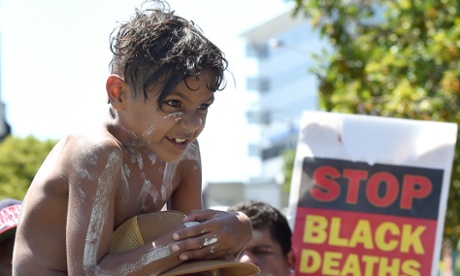Will the next report on Indigenous disadvantage chart further decline? How about the one after that? Top-down approaches won’t fix suicide rates, infant mortality, chronic disease

Earlier this month, an 11-year-old Aboriginal boy named Peter was found hanging from a tree, in Geraldton, WA, after walking away from a group of children he had been playing with. He was found by another child in the community.
That a child would make the decision to take his own life is distressing enough. Yet according to reports, this was but a final attempt on his life that Peter had made over the course of months. At 11 years old, Peter leaves behind his grieving grandparents – who were his primary carers – and his parents. His death has rocked the entire community.
One of the most distressing facts about Wednesday’s release of the Overcoming Indigenous Disadvantage report is that tragic news like this is becoming more common. The suicide rate for Indigenous Australians was recorded as nearly double that of non-Indigenous Australian. The rates of hospitalisation for intentional self-harm have climbed by an alarming 48%. That infant mortality rates have halved is fantastic news but the idea that more of our children might find this life too distressing and seek to end it is devastating, to say the least.
In many areas where we predicted advancement for Aboriginal and Torres Strait Islander people, positive outcomes have indeed been achieved. Yet according to the report, these increases do not appear to be contributing to broader outcomes at this stage. That’s fascinating in and of itself. Despite higher year 12 attainment rates, literacy and numeracy rates remained static. Despite a minor increase in the life expectancy for both men and women, rates of chronic disease remain unchanged.
More Aboriginal people may be purchasing their own homes yet as the gap on access to clean water, functioning sewage and electrical services widens. Communities can go without water for months and it seems to be nobody’s responsibility to rectify the situation. Can we guarantee that people will be able to actually live the homes they purchase?
As remoteness appears to contribute to further gaps in the outcomes, so too does it seem to preclude those that live in these communities from rightfully expecting that they will receive the basic services other Australian residents take for granted.
Unsurprisingly, the prison rate continues to soar, rising by 57% between 2000 and 2013. Beyond racism, official policies like mandatory sentencing laws continue to see people locked away for the pettiest offences. Most recently, the case of Ms Dhu – who died in custody whilst serving time to “work off” fines – highlighted the tragic outcomes that result when many Indigenous people come into contact with the legal system; the Abbott government, however, saw fit to cut funding to Aboriginal legal services.
Additionally, rates of community and family violence have remained static, yet the services that support people to leave these situations, such as women’s shelters and counselling services, have also been cut dramatically. With this in mind, are we likely to see the next report highlighting similar stasis or decline? What about the one after that?
It’s incredibly difficult to remain hopeful as an Indigenous person when reading the outcomes in this report. To me, it illustrates the continual failure of top-down approaches by successive governments and the neglect of these governments to focus on services that allow for self-determination that may make some positive changes.
It also highlights that the answer to poor rates of wellbeing in Indigenous Australia: as so many members of the community keep on saying, consultation with communities is the only way forward. Equality should not be unattainable, yet if things continue the way they have been, it’s unlikely that change will come.
